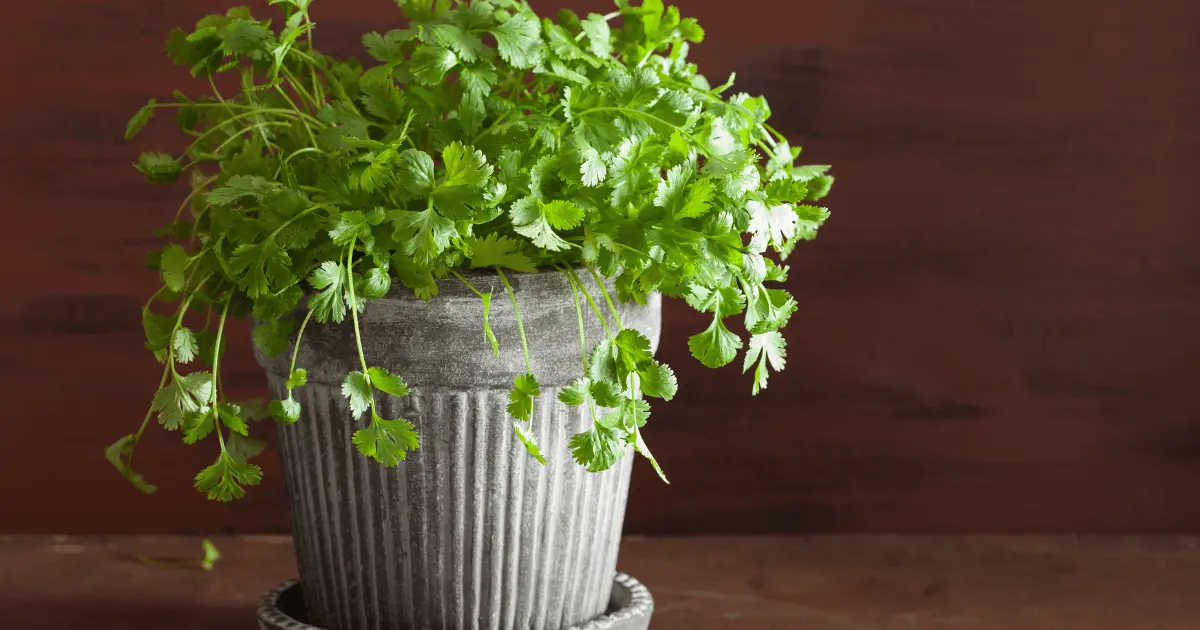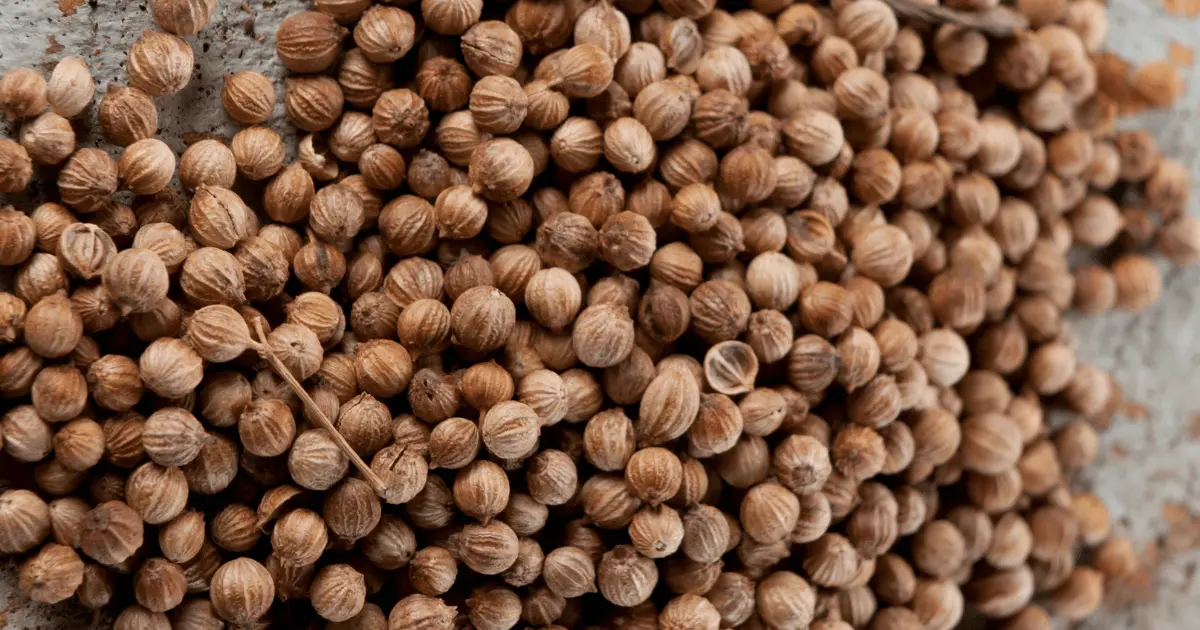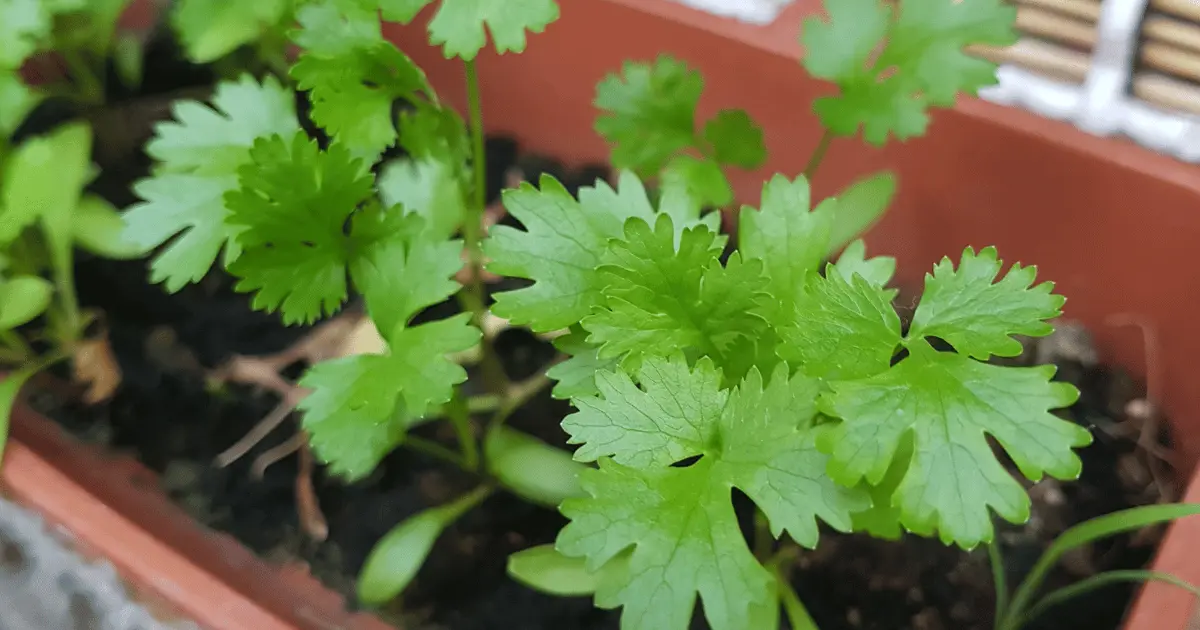Learning how to grow cilantro in a pot is well worth it. Cilantro is an easy-to-grow herb that thrives in cooler weather. This fast-growing aromatic plant is typically used as a spice for various dishes worldwide and helps prevent food poisoning.
Cilantro herbs are valuable and will not lack their uses in your kitchen; they can be paired with other crops when planting and will be a double harvest for you. If you choose to plant cilantro in a pot, you will find that the steps involved are easy to follow.
Methods of Growing Cilantro in a Pot

People grow cilantro differently; some grow them from the seed level, while others plant them from cuttings or at a more mature age. Your planting method will depend on several factors like climate, time of the season, and how long you want to plant them.
Growing Cilantro Seeds in a Pot

If you wish to grow cilantro seeds, then you might want to consider the following steps:
Step 1. Plant at the Right Time
If you live in a scorching climate area, it’s usually best to plant cilantro in the late fall or early spring. But if you live in the Northern climate, which is relatively cool, it’s best to plant cilantro in the late spring. Choosing the right time of the year to plant cilantro can help you to have a more productive yield.
Step 2. Choose Your Pot
When selecting a pot, choose one that is wide and shallow. The pot should accommodate multiple cilantro plants, giving you a good harvest. An ideal planting pot should be 18 inches wide, and 10-12 inches deep should be good to use, as cilantro has long taproots.
Step 3. Plant the Cilantro Seeds
Place your cilantro seeds in a pot of appropriate size, and ensure the seeds are in a group, as singular seeds are likely not to grow. Place the pot in an area where it will receive full sunlight to help it grow well.
Step 4. Filling Your pot with Potting Soil
Purchasing an organic potting mix for your cilantro pot is necessary for planting. A good potting soil mix should drain quickly to avoid water-logging, and it’s best to add compost manure to the soil mix. Let your potting mix dry slightly in the shade to eliminate fungus gnats if present. Gently moisten your potting soil with a low-pressure mist after filling your pot with the potting mix.
Step 5. Planting the Seeds
Cilantro seeds, also called coriander seeds, are tiny so you can plant them differently. While some gardeners plant them directly in the pot, others prefer to mix them with sand in a bowl before planting. No matter how you plant them, ensure they’re at least 0.6cm deep and 3-6 inches apart for optimum growth. Then spread evenly on the soil mix and cover the seeds with a layer of potting soil; this will evenly distribute the seeds.
When spacing your cilantro plant in the pot, it’s best to gently pull out the weaker-looking plants leaving only the more vigorous and healthier-looking plants.
Step 6. Nurturing Your Plant
When you have planted your coriander seeds, you should immediately water them. Regularly water your cilantro pot throughout the growing season; only water a little when the seeds are nearing maturity. Remember that you only water when the soil is dry to avoid overwatering. Monitor the growing temperature of your cilantro pot to be between 50 and 85 degrees Fahrenheit to avoid bolting. Your plant starts to bolt when it produces a lacy and fern-like leaf along its stalk, while typically, your plant produces a flat-wide leaf.
Step 7. Applying Fertilizer
It would be best if you fertilized your plants twice during the growing period, and the first time should be when your plant reaches 2 inches in height. You can fertilize using compost or organic fertilizer to enhance the production of more flowers from your crop to bring about more coriander seeds.
Remember to check for pests and diseases that can affect your plant. One such disease to look out for is Bacterial leaf spot which you can control using cold-pressed neem oil with azadirachtin. In contrast, some pests are green peach aphids, armyworms, etc. However, the cilantro’s white or pale pink flowers can attract insects like adult syrphid flies and parasitic wasps that consume nectar and feed on aphids and other insects.
Step 8. Harvesting
Cilantro leaves are often ready for harvest within 45 to 80 days after planting the seeds. You can harvest your cilantro as soon as it reaches 4 to 6 inches in length. Cut up to ⅔ of the plant leaves that are evenly colored and bright weekly to encourage it to grow more. This method will increase your chances of having about four crops of cilantro harvested from a single pot.
To harvest coriander seeds, you should allow the growing season to be at least 100 days. Allow the seeds to dry the brown, fruiting structure from your plant. Once dried, you can remove the seeds from the fruiting structure of the plant.
Step 9. Storage
Your cilantro leaves should be used when fresh, although you can freeze or dry them for use later. You can directly place your cilantro leaves in the refrigerator for a week or put a bunch of them in the water in the refrigerator to maintain their freshness. You should change the water every 2-3 days.
It’s good you remember to only wash the cilantro leaves after refrigerating them to keep the flavor of the dried leaves fresh. Place the whole pods in a cool and dry location to save the cilantro seed for the next planting.
Planting Cilantro Cuttings in a Pot

Some find it more straightforward to put cilantro cuttings rather than cilantro seeds. You can do this in two ways: root cuttings and stem cuttings. Root cuttings are far easier to plant and grow than stem cuttings. Note, however, that for a better chance of growing cilantro from cuttings, you should plant them fresh (without storing them for any period).
Step 1: Get the Cuttings
Take 10-15 of your cilantro stem and trim them to about 3 inches in length. When you do this, the new plants will grow more quickly, especially if the roots are not attached.
Step 2: Grow Root Cuttings
Insert your stem cuttings into a clean glass of water for them to grow stem roots. Ensure your roots are 3-4 inches long before transplanting them into a pot.
Step 4: Plant the Cuttings in a Pot
Make sure to space your cilantro stem about 3 inches apart. Position your pot that is filled with a well-draining potting compost in a sunny area.
Step 5: Nurture the Plant
Keep your potting soil moist for a few weeks so that the cuttings can grow like regular plants. Repeat all the caring techniques outlined earlier in the article.
Some Companion Plants for cilantro crops
Cilantro crops are known to do best when planted with aphid-repellent plants that produce large amounts of nitrogen. The following plants should be considered:
- Peas
- Clover
- Pole beans
- Sunflowers
- Wax beans
Cilantro plants need a lot of direct sunlight for about 4-5 hours daily and should be watered frequently. Your cilantro plant is a cool-season plant and will do well in neutral, crumbly, and lightly well-drained soil.
